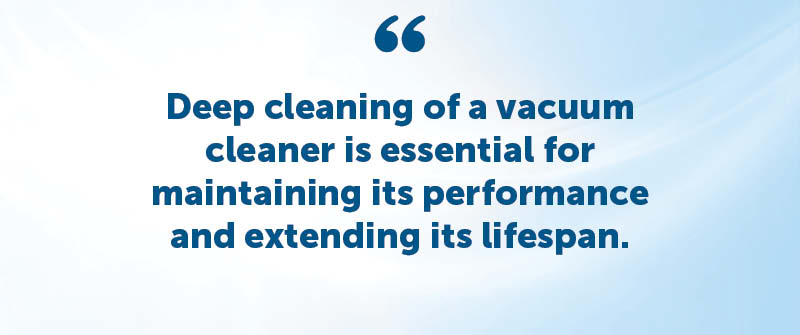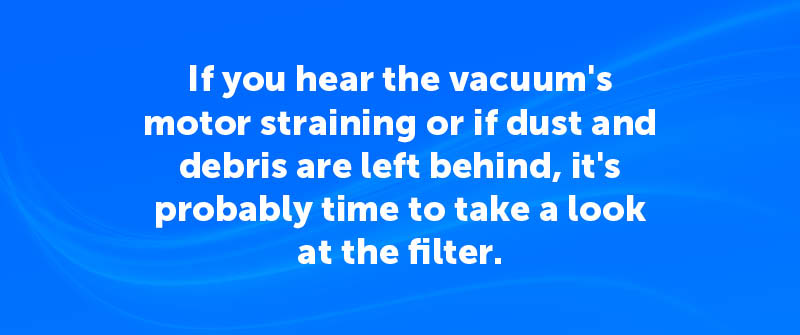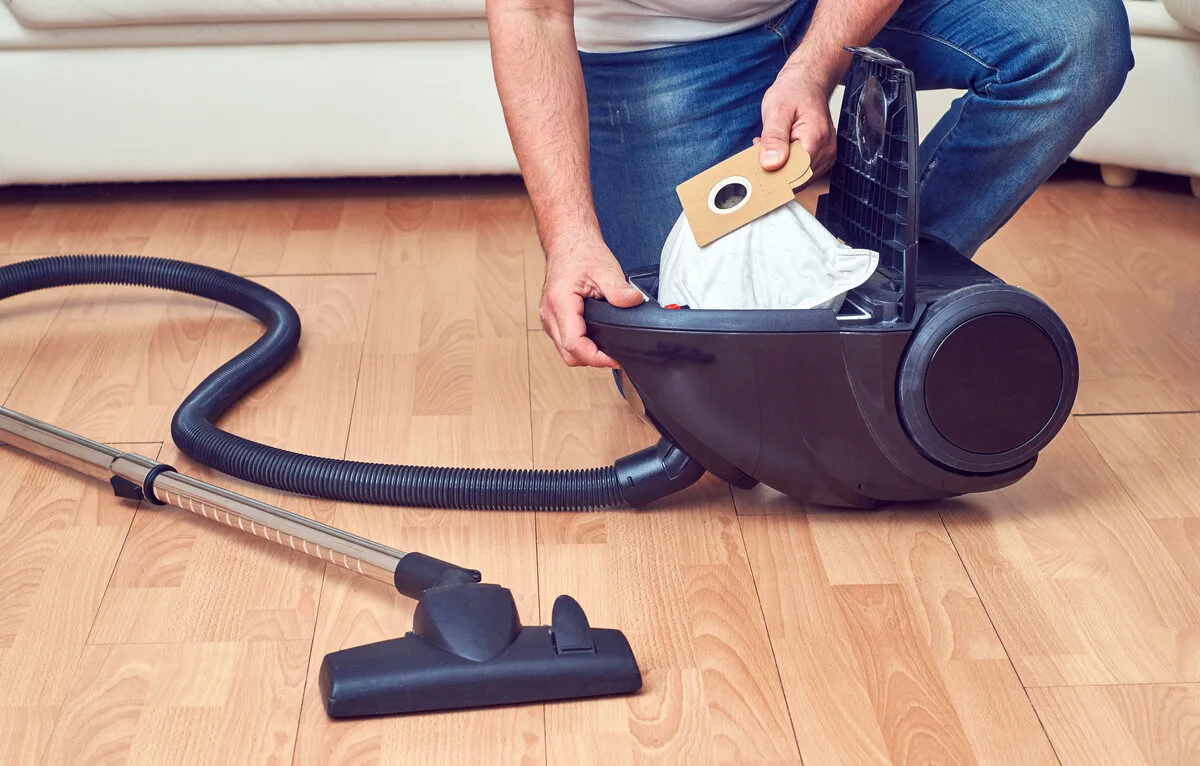What Is The Best Way To Clean A Vacuum Filter?
Keeping your vacuum cleaner at peak performance starts with understanding how to clean your vacuum filter properly to maintain optimal vacuum performance. But before you dive in, the first step is to identify what type of vacuum cleaner filter you’re dealing with. Common types include sponge filters, bag filters, and HEPA filters, among others. Knowing which type you’ve got will dictate the cleaning process.
Identify the Type of Vacuum Filter You Have
A sponge filter is typically washable and can often be rinsed under water. A foam vacuum filter, constructed from foam material, is also effective at capturing larger particles like dust and hair. Bag filters, however, may need replacement instead of washing, especially if they are paper-based. For Dyson vacuum filters, which often feature a combination of sponge and HEPA filters, it’s crucial to follow the manufacturer’s cleaning guidelines to maintain their effectiveness.
General Cleaning Steps for Vacuum Filters
For most filters, begin by removing the filter from your vacuum cleaner. Gently tap it to remove loose dust and debris. Use a soft brush to remove any stubborn dirt. For a washable vacuum filter, run it under lukewarm water until the water runs clear, emphasizing the vacuum cleaner filter replacement cost savings. Allow them to dry completely before reinserting them into the vacuum to prevent mold growth.
Specific Cleaning Instructions for Different Brands
Different brands like Dyson, Shark, and BISSELL might have specific instructions for cleaning their filters. Dyson filters can often be rinsed under water, but be sure to check your model’s guide. Some Shark models have rinseable filters as well, but it’s important to refer to their manual as procedures may vary by model. When in doubt, consult your vacuum’s user manual for brand-specific cleaning advice.

Can A Vacuum Cleaner Filter Be Washed?
When it comes to maintaining your vacuum cleaner’s performance, cleaning its filter is essential. A foam filter is particularly important as it traps dirt and debris, ensuring the vacuum operates efficiently. However, not all filters can be treated the same way. One frequent question is whether or not a vacuum cleaner filter can be washed.
Types of Filters That Are Washable
Most modern vacuums, especially brands like Shark, Dyson, and Dirt Devil, come with filters that are designed to be washable. These include foam vacuum filters, which are washable and reusable, and felt filters, commonly found in bagless vacuums. If your vacuum has a HEPA filter, you’ll need to check if it’s labeled as washable (sometimes referred to as rinseable). These washable filters can be a convenient and eco-friendly alternative as they don’t need replacement as frequently as non-washable options for most vacuum cleaner models.
Tips for Washing Vacuum Filters Safely
To wash a vacuum cleaner filter, start by gently removing the filter from your machine. Use lukewarm water to rinse it, avoiding any cleaning agents that might damage the material or leave a residue and always use a mild detergent. For foam filters, a gentle squeeze can help remove dirt without tearing. Avoid twisting or stretching filters, as this might degrade their structure.
Drying Instructions for Washed Filters
Proper drying is crucial after washing a vacuum filter to prevent mold and mildew. Lay the filter on a flat surface and allow it to air dry completely for at least 24-48 hours. Ensure it’s entirely dry before reinserting it into the vacuum, as moisture can cause electrical problems or suction issues.
By following these steps, you can effectively clean washable filters, prolonging the life of your vacuum cleaner and ensuring it continues to work efficiently.
How To Deep Clean A Vacuum Cleaner?
Deep cleaning of a vacuum cleaner is essential for maintaining its performance and extending its lifespan. High-efficiency particulate air (HEPA) filters, a type of pleated mechanical filter officially defined by the U.S. Department of Energy, can remove at least 99.97% of dust, pollen, mold, bacteria, and airborne particles as small as 0.3 microns. These filters are crucial in the cleaning process, as they effectively trap small airborne particles, allergens, and contaminants, significantly improving indoor air quality. Whether you have a BISSELL, a vacuum with a paper filter, or another brand, the process ensures that your appliance continues to suck up dirt and debris effectively.
Deep Cleaning Tools and Supplies Needed
Before diving into the cleaning process, gather the necessary tools and supplies. You will need a screwdriver to detach parts, a soft brush for dusting, a can of compressed air to blow out hidden debris, a cleaning cloth, and a mild soap solution. For vacuum cleaners with a paper vacuum filter, prepare a replacement filter, as these types need to be replaced rather than washed to maintain vacuum suction power and overall performance.
Step-by-Step Deep Cleaning Process
The first step is disassembly. Safely unplug your vacuum before removing the canister or dust cup. Maintaining your vacuum’s suction power is crucial, so next, remove and inspect the filters. If your model includes a washable filter, such as in some vacuum cleaner BISSELL models, wash it gently with water and mild soap. Make sure to air dry the filter completely before reinserting it back into the vacuum.
For those vacuums with a paper filter, such as some older models, it’s recommended to replace them rather than try to clean them since washing could damage the filter material. Proceed by checking and clearing any clogs or blockages within the hose and brush roll. Use a brush to scrub and remove tangled hair or fibers from the brush roll.
Clean the external and internal surfaces with a damp cloth, ensuring you don’t miss the dust cup and intake vents. Finally, reassemble all parts securely before testing your vacuum to confirm its working condition.
Preventive Maintenance Tips
Regular maintenance is key to avoiding frequent deep cleans. Make a habit of emptying the canister after each use to prevent buildup. Check filters monthly to see if they need cleaning or replacement based on your vacuum’s specific maintenance guidelines. Keeping your cleaning area free from large debris can also prolong the time between deep cleans.
By incorporating these tips into your routine, your vacuum cleaner will not only clean effectively but will also serve you well for many years.

How Often Should You Clean Your Vacuum Filter?
Factors Influencing Cleaning Frequency
When it comes to determining how often to clean your vacuum filter, several factors come into play. The environment in which you use your vacuum is a significant consideration. If you have pets that shed frequently, or if you live in a particularly dusty area, you may need to clean your filter more often. Such environments tend to cause filters to clog up quickly, reducing the vacuum’s efficiency and performance.
Another factor is how frequently you use the vacuum cleaner. A household where vacuuming is a part of the daily routine will require more frequent filter cleanings than a home where it’s done once a week. Also, consider the type of debris being vacuumed. Larger particles can clog a filter faster, necessitating more frequent cleaning sessions.
General Guidelines for Different Vacuum Cleaner Filter Types
The type of filter your vacuum uses also impacts cleaning frequency. Bagless vacuum filters, for instance, generally need cleaning after every three uses, whereas standard filters in bagged vacuums may only require cleaning after being emptied a few times. Paper vacuum filters, often made of pleated paper or non-woven synthetic materials, are essential for capturing small particles, dust, and germs from the air. These filters can be either disposable or washable and reusable, and they require regular replacement to maintain optimal vacuum performance. Check your vacuum’s user manual for recommended cleaning schedules tailored to your specific model.
HEPA filters are designed to capture the smallest particles for a better cleaning result. While incredibly effective, they also demand regular attention to maintain their filtering ability. Check the manufacturer’s advice, but as a general rule, cleaning once every two months is advisable if you are using a HEPA filter.
Signs That Your Vacuum Filter Needs Cleaning
Recognizing the signs of a filter in need of cleaning can extend the life of your vacuum and improve performance. Common indicators include reduced suction power and an unusual odor coming from the vacuum. If you hear the vacuum’s motor straining or if dust and debris are left behind, it’s probably time to take a look at the filter.

If you are unsure about the state of your filter, a quick visual inspection can also be helpful. If it appears to be discolored or clogged, those are clear signs that cleaning is overdue.
Keeping your vacuum filter clean is key to enhancing its performance and prolonging its lifespan. For a cleaner home environment and to keep your vacuum at its best, browse our diverse selection of high-quality filters at Discount Filters. We have options to suit every need, ensuring that your home remains fresh and free from dust year-round.

